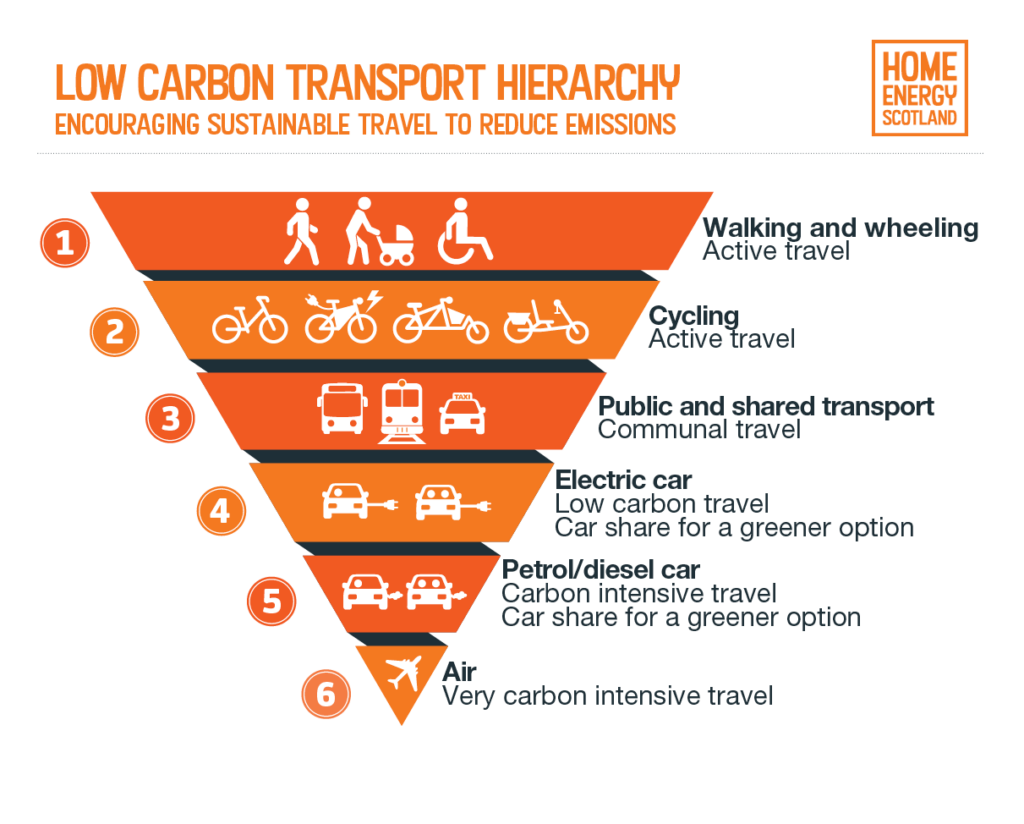Lvbu Ebike kit--low carbon travel enjoy free riding
Transport accounts for around one-quarter of global carbon dioxide (CO2) emissions from energy.1 In some countries – often richer countries with populations that travel often – transport can be one of the largest segments of an individual’s carbon footprint.
If you need to travel – either locally or abroad – what is the lowest-carbon way to do so?
In the chart here we see the comparison of travel modes by their carbon footprint. These are measured by the amount of greenhouse gases emitted per person to travel one kilometer.
This data comes from the UK Government’s Department for Energy Security and Net Zero. It’s the emission factors used by companies to quantify and report their emissions. While the overall rankings of transport modes will probably be the same, there may be some differences across countries based on their own electricity mix, vehicle stock, and public transport network.
Greenhouse gases are measured in carbon dioxide equivalents (CO2eq), and they account for non-CO2 greenhouse gases and the increased warming effects of aviation emissions at high altitudes.2

Walk, bike or take the train for the lowest footprint
Over short to medium distances, walking or cycling are nearly always the lowest carbon way to travel. While they’re not in the chart, the carbon footprint of cycling one kilometer is usually in the range of 16 to 50 grams CO2eq per km depending on how efficiently you cycle and what you eat.3
Using a bike instead of a car for short trips would reduce your travel emissions by around 75%.
If you can’t walk or cycle, then public transport is usually your best option. Trains are particularly low-carbon ways to travel. Taking a train instead of a car for medium-length distances would cut your emissions by around 80%.4 Using a train instead of a domestic flight would reduce your emissions by around 86%.5
In fact, if you If you took the Eurostar in France instead of a short-haul flight, you’d cut your journey’s footprint by around 97%.6
What if you can’t walk or cycle, and have no public transport links?
If none of the above are options, what can you do?
Driving an electric vehicle (EV) is your best mode of private transport. It emits less than a petrol or diesel car, even in countries where the electricity mix is fairly high-carbon. Of course, powering it from low-carbon grid offers the greatest benefits.
The chart above only considers emissions of EV during its use phase – when you’re driving it. It doesn’t include emissions from the manufacturing of the car. There have been concerns that when we account for the energy needed to produce the battery, an EV is actually worse for the climate than a petrol car. This is not true – while an EV does have higher emissions during its production, it quickly ‘pays back’ once you start driving it.7
Next best is a plug-in hybrid car.
Then, where you take a petrol car or fly depends on the distance. For journeys less than 1000 kilometers, flying has a higher carbon footprint than a medium-sized car. For longer journeys, flying would actually have a slightly lower carbon footprint per kilometer than driving alone over the same distance.
Let’s say you were to drive from Edinburgh to London, which is a distance of around 500 kilometers. You’d emit close to 85 kilograms CO2eq.8 If you were to fly, this would be 123 kilograms – an increase of almost one-third.9
Some general takeaways on how you can reduce the carbon footprint of travel:
Walk, cycle or run when possible – this comes with many other benefits such as lower local air pollution and better health;
Trains are nearly always the winning option over moderate-to-long distances;
If travelling internationally, going by train or boat is lower-carbon than flying;
Electric vehicles are nearly always lower-carbon than petrol or diesel cars. The reductions are greatest for countries with a cleaner electricity mix;
If travelling domestically, driving – even if it’s alone – is usually better than flying;
Car-sharing will massively reduce your footprint – it also helps to reduce local air pollution and congestion.

Appendix: Why is the carbon footprint per kilometer higher for domestic flight than long-haul flights?
You will notice that the CO2 emissions per passenger-kilometer are higher for domestic flights than short-haul international flights; and long-haul flights are slightly lower still. Why is this the case?
In its report on the CO2 Emissions from Commercial Aviation, the International Council on Clean Transportation provides a nice breakdown of how the carbon intensity (grams CO2 emitted per passenger kilometer) varies depending on flight distance.10
This chart is shown here – with carbon intensity given as the red line. It shows that at very short flight distances (less than 1,000 km), the carbon intensity is very high; it falls with distance until around 1,500 to 2,000 km; then levels out and changes very little with increasing distance.
This is because take-off requires much more energy input than the ‘cruise’ phase of a flight. So, for very short flights, this extra fuel needed for take-off is large compared to the more efficient cruise phase of the journey. The ICCT also notes that often less fuel-efficient planes are used for the shortest flights.

